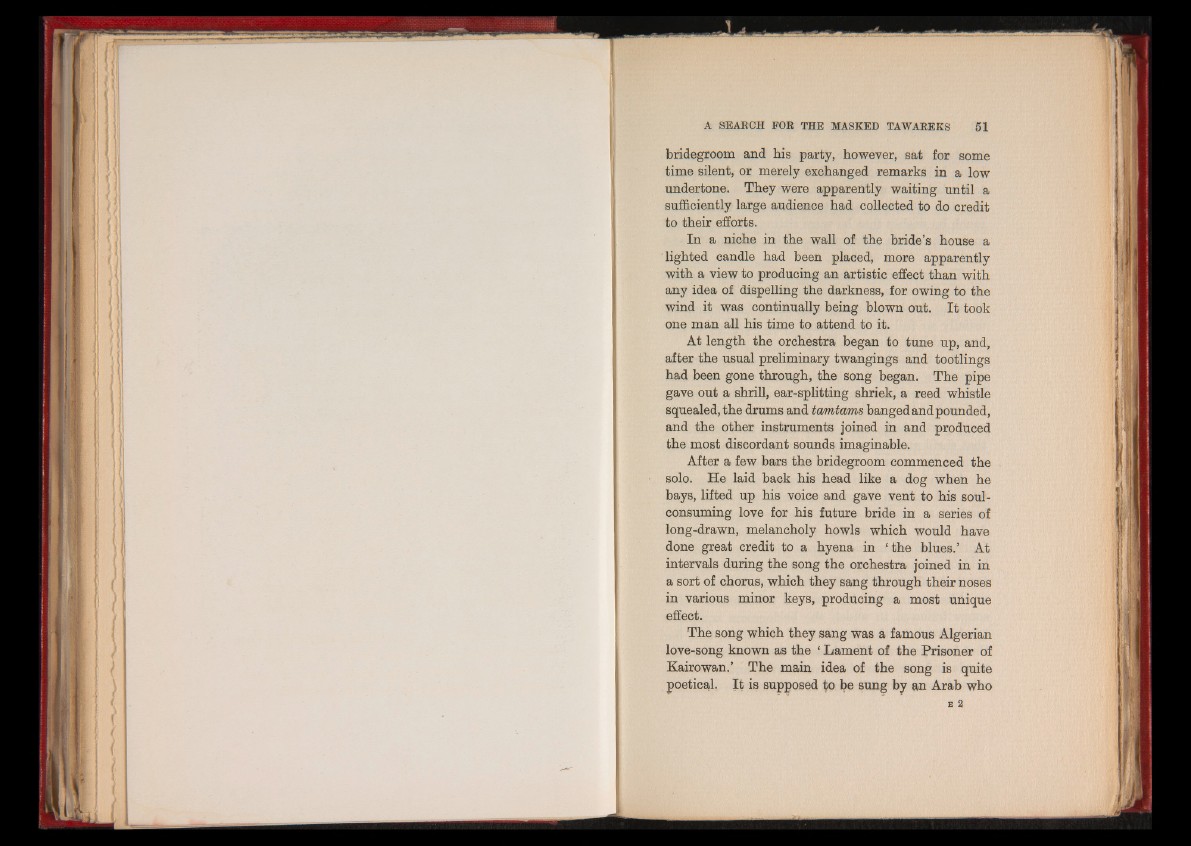
bridegroom and his party, however, sat for some
time silent, or merely exchanged remarks in a low
undertone. They were apparently waiting until a
sufficiently large audience had collected to do credit
to their efforts.
In a niche in the wall of the bride’s house a
lighted candle had been placed, more apparently
with a view to producing an artistic effect than with
any idea of dispelling the darkness, for owing to the
wind it was continually being blown out. It took
one man all his time to attend to it.
At length the orchestra began to tune up, and,
after the usual preliminary twangings and tootlings
had been gone through, the song began. The pipe
gave out a shrill, ear-splitting shriek, a reed whistle
squealed, the drums and tamtams banged and pounded,
and the other instruments joined in and produced
the most discordant sounds imaginable.
After a few bars the bridegroom commenced the
solo. He laid back his head like a dog when he
bays, lifted up his voice and gave vent to his soulconsuming
love for his future bride in a series of
long-drawn, melancholy howls which would have
done great credit to a hyena in ‘the blues.’ At
intervals during the song the orchestra joined in in
a sort of chorus, which they sang through their noses
in various minor keys, producing a most unique
effect.
The song which they sang was a famous Algerian
love-song known as the ‘ Lament of the Prisoner of
Kairowan.’ The main idea of the song is quite
poetical. It is supposed to be sung by an Arab who